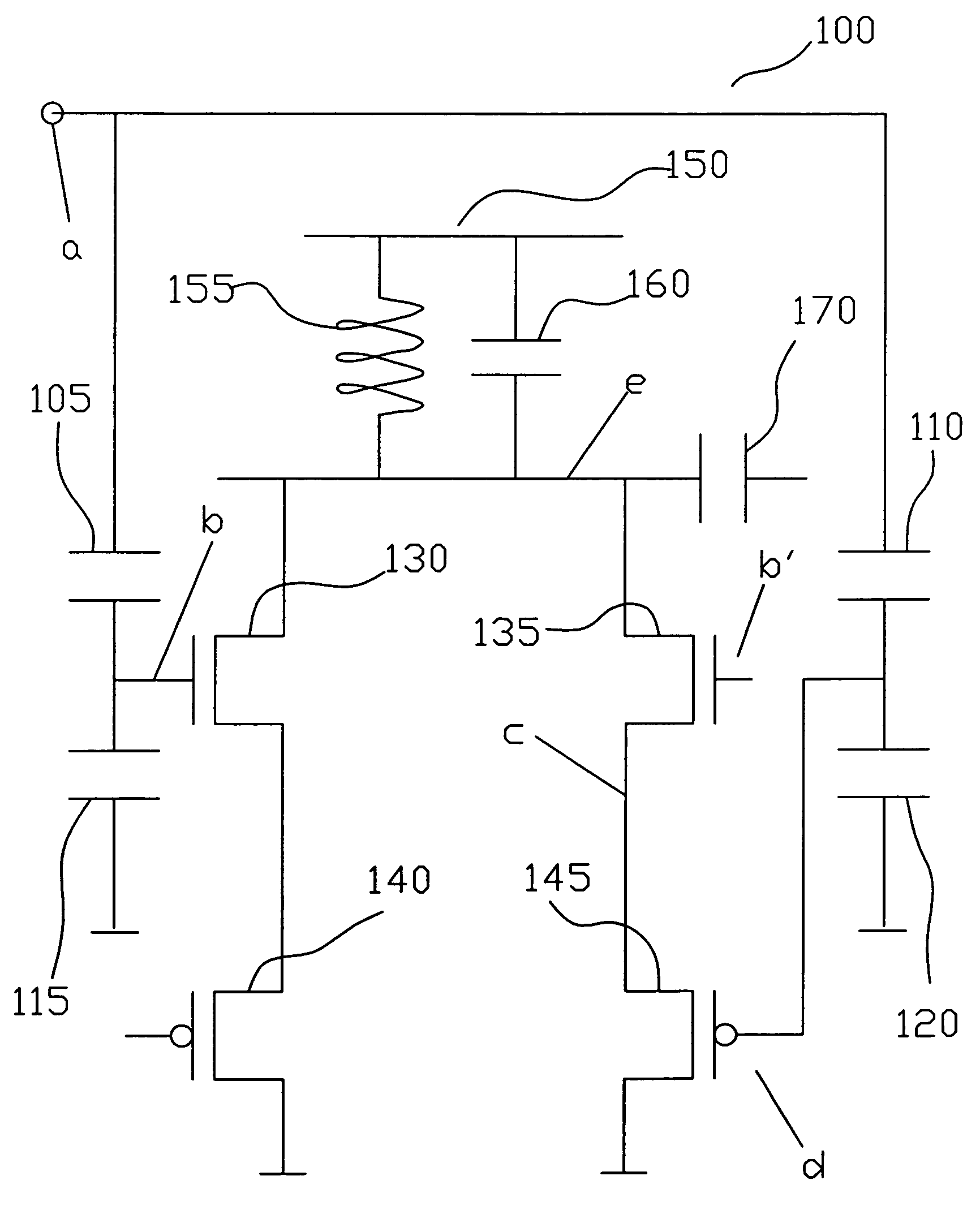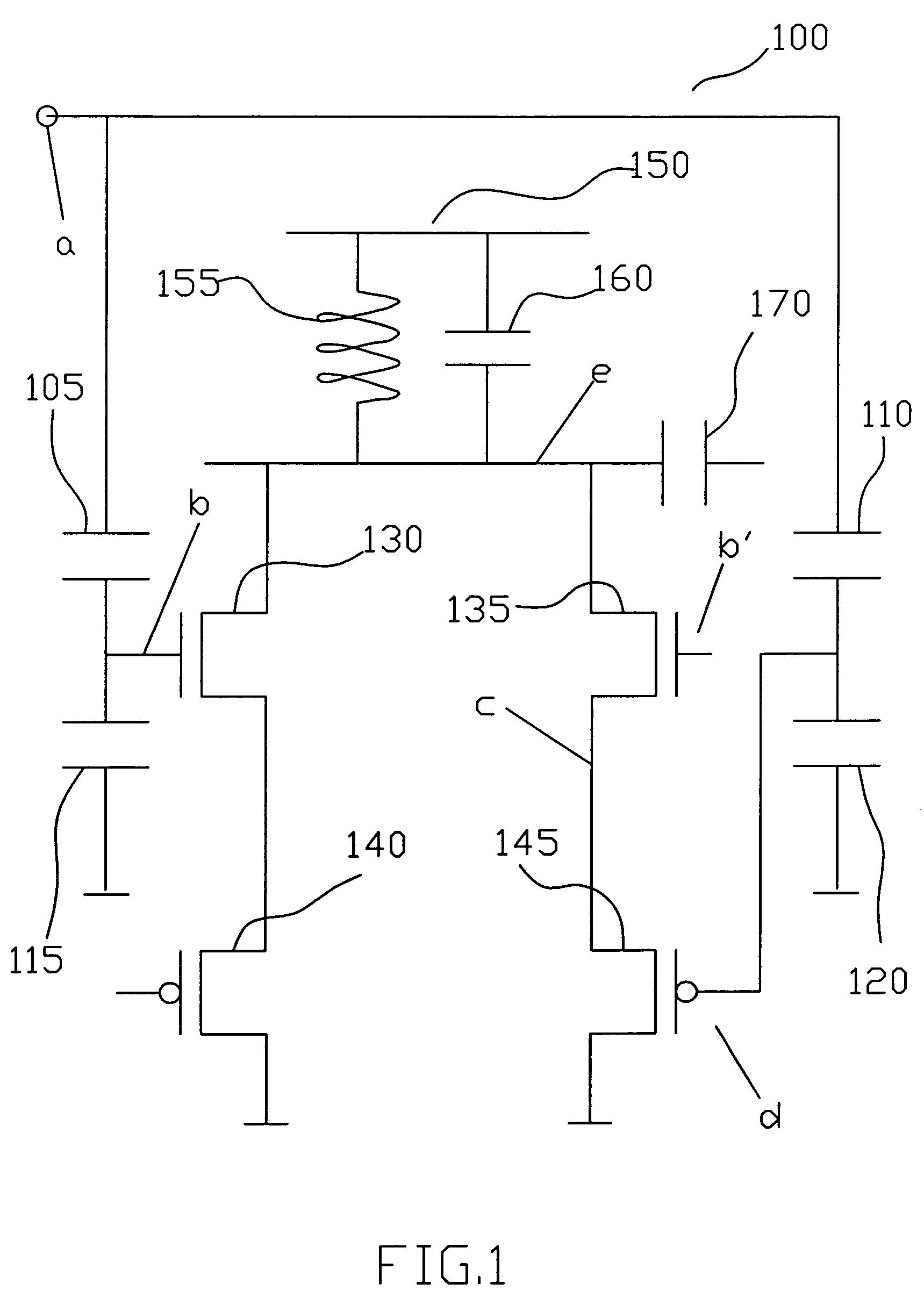CMOS single-ended frequency doubler
a frequency doubler and single-ended technology, applied in the direction of oscillator, pulse generator, pulse technique, etc., can solve the problems of only achieving limited harmonic and subharmonic rejection, limited phase noise performance of the pll, and designs that only exist in bipolar (bjt), so as to improve the subharmonic rejection and low phase noise
- Summary
- Abstract
- Description
- Claims
- Application Information
AI Technical Summary
Benefits of technology
Problems solved by technology
Method used
Image
Examples
Embodiment Construction
[0024]Reference will now be made in detail to the preferred embodiments of the present invention, examples of which are illustrated in the accompanying drawings. Wherever possible, the same reference numbers are used in the drawings and the description to refer to the same or like parts.
[0025]Refer to FIG. 1, which is a circuit schematic illustrating a CMOS single-ended frequency doubler according to an embodiment of the present invention.
[0026]As shown in FIG. 1, the CMOS single-ended frequency doubler 100 comprises a first capacitor 105 connected between a single-ended input node (a) and the gate of a first transistor 130. A second capacitor 115 is connected between the gate of the first transistor 130 and ground. The source of a first PMOS transistor 140 is connected to the source of the first transistor 130. The drain of the first PMOS transistor 140 is connected to ground.
[0027]A third capacitor 110 is connected between the single-ended input node (a) and the gate of a second P...
PUM
 Login to View More
Login to View More Abstract
Description
Claims
Application Information
 Login to View More
Login to View More - R&D
- Intellectual Property
- Life Sciences
- Materials
- Tech Scout
- Unparalleled Data Quality
- Higher Quality Content
- 60% Fewer Hallucinations
Browse by: Latest US Patents, China's latest patents, Technical Efficacy Thesaurus, Application Domain, Technology Topic, Popular Technical Reports.
© 2025 PatSnap. All rights reserved.Legal|Privacy policy|Modern Slavery Act Transparency Statement|Sitemap|About US| Contact US: help@patsnap.com



